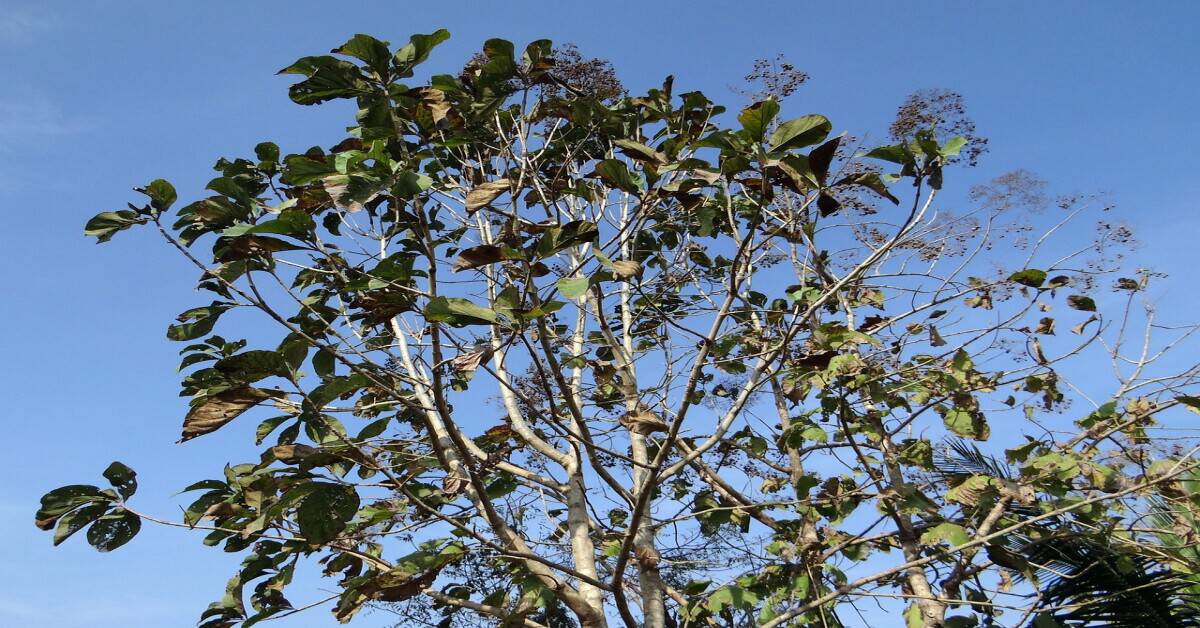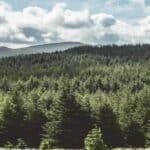Tropical evergreen forests are lush, dense, and filled with life. They remain green all year round. In our blog post, Tropical Evergreen Forest: A Virtual Tour, we will take you on a journey through these vibrant ecosystems. You will learn about their unique features and why they are so important.
A virtual tour of tropical evergreen forests offers a great way to explore these forests from your home. You can see the diverse plant and animal life up close. This experience provides a deeper understanding of the forest’s beauty and complexity.
Virtual tours are interactive and engaging. They let you navigate through different sections of the forest. This method of exploration is educational and fun for all ages.
Overview of Tropical Evergreen Forests
Evergreen forests are dense, green, and vibrant. These forests remain lush throughout the year. Located near the equator, they thrive in regions with high rainfall and warm temperatures.
The dense canopy prevents sunlight from reaching the forest floor, creating a humid and shaded environment. This unique climate supports a wide variety of plants and animals, making these forests incredibly biodiverse.
The importance of these lush green forests in the global ecosystem cannot be overstated:
Biodiversity: They host countless species of plants, animals, and microorganisms, many of which are not found anywhere else.
Carbon Sequestration: These forests absorb large amounts of carbon dioxide, helping to mitigate climate change.
Oxygen Production: They are crucial in producing oxygen, which is essential for all life on Earth.
Water Cycle Regulation: They play a vital role in the water cycle, influencing weather patterns and rainfall distribution.
Soil Protection: The thick vegetation protects soil from erosion, maintaining land fertility and preventing landslides.
Climate in Tropical Rainforest
The climate of tropical evergreen forests is consistently warm and humid throughout the year. These forests are located near the equator, which means they experience little variation in temperature.
During summer, temperatures typically range from 25 to 30 degrees Celsius (77 to 86 degrees Fahrenheit). In winter, temperatures remain similar, rarely dropping below 20 degrees Celsius (68 degrees Fahrenheit).
Humidity in tropical evergreen forests is very high, often exceeding 80%. This consistent humidity supports the lush vegetation and diverse ecosystems found in these forests.
Rainfall is abundant and evenly distributed throughout the year, with annual precipitation often exceeding 2000 millimeters (79 inches).
This constant moisture ensures that the forest remains green and vibrant, providing a stable environment for a wide variety of plant and animal species.
Where are Tropical Evergreen Forests Found?
Evergreen lush forests are found near the equator, in regions with consistent warmth and high rainfall. They are mainly located in South America, Central Africa, Southeast Asia, and parts of Australia.
These forests thrive in conditions where temperatures are stable and precipitation is abundant throughout the year. This creates an environment that supports diverse and complex ecosystems.
Notable locations with significant tropical evergreen forests include the Amazon Basin in South America, the Congo Basin in Central Africa, and the rainforests of Southeast Asia.
In India, the Western Ghats and the north-eastern states like Assam and Meghalaya are prime examples. These areas are rich in biodiversity and have dense vegetation.
The Western Ghats, for instance, are a UNESCO World Heritage site, known for their unique species and ecological importance.
Evergreen Forest Trees and Plants
Tropical evergreen forests are home to a vast array of trees and plants. The trees are typically tall with dense canopies that block much of the sunlight. This creates a shaded environment underneath where many unique plants thrive.
The trees often have large, broad leaves that help capture sunlight in the dim understory. The constant warmth and moisture allow these plants to grow year-round without a dormant season.
Common trees in tropical evergreen forests include Mahogany, Teak, Dipterocarpus, Ebony, and Rosewood. These trees are known for their valuable hardwood and are often targeted for logging.
The trees are well adapted to the humid environment, with buttressed roots that provide stability and help them absorb nutrients in shallow soil.
The types of plants found in these forests are equally diverse. These include epiphytes, which grow on other plants, ferns, mosses, and a variety of shrubs. These plants have adapted to the low light conditions of the forest floor.

Key characteristics and adaptations of these trees and plants include:
Buttressed Roots: These provide stability and support in the shallow, nutrient-poor soil.
Large Leaves: These help capture the limited light that penetrates the dense canopy.
Drip Tips: These allow leaves to shed water quickly, preventing mold and fungal growth.
Epiphytic Growth: This allows plants to live on other plants, gaining access to sunlight.
Thick Bark: This protects against pests and diseases in the humid environment.
Prominent tree species in these forests include:
- Mahogany (Swietenia macrophylla)
- Teak (Tectona grandis)
- Dipterocarpus (Dipterocarpus alatus)
- Ebony (Diospyros ebenum)
- Rosewood (Dalbergia latifolia)
- Kapok (Ceiba pentandra)
- Ironwood (Eusideroxylon zwageri)
Also Read: Overview of Plant and Animal Diversity
Prominent plant species include:
- Orchids
- Bromeliads
- Staghorn Ferns
- Philodendrons
- Rattan Palms
- Heliconias
- Lianas
These trees and plants form a complex and interdependent ecosystem, each adapted to thrive in the unique conditions of tropical evergreen forests.
Wildlife of Tropical Evergreen Forests
Evergreen forests are home to an incredibly diverse range of animal species. These forests are teeming with life, from the forest floor to the canopy. Common inhabitants include the jaguar, sloth, toucan, and poison dart frog.
Other notable species are the Asian elephant and the orangutan. These animals play essential roles in the forest ecosystem, contributing to its health and stability.
Many unique and endangered species live in these forests. The Bengal tiger, found in the forests of India and Southeast Asia, is critically endangered due to habitat loss and poaching.
The harpy eagle, one of the largest and most powerful eagles, is also threatened by deforestation in Central and South America.
The Sumatran rhinoceros, found in Indonesia, is another critically endangered species due to hunting and habitat destruction.
Wildlife in these evergreen ecosystem has developed various adaptations to survive. Many animals, like the spider monkey, have prehensile tails to help them navigate the trees.
Camouflage is common, as seen in the green tree frog, which blends seamlessly with leaves. Nocturnal habits, such as those of the ocelot, allow animals to avoid daytime predators.
These adaptations enable the diverse fauna to thrive in the complex and competitive environment of these lush rainforest.

Ecological Importance of Evergreen Forests
Tropical evergreen forests play a crucial role in maintaining biodiversity. These forests are among the most species-rich ecosystems on Earth.
They provide habitat for countless plants, animals, and microorganisms, many of which are not found anywhere else.
The complex structure of these forests, from the canopy to the understory, supports diverse life forms that depend on each other for survival. This high level of biodiversity helps ensure ecosystem stability and resilience.
These forests are vital in regulating the carbon cycle and climate. They act as significant carbon sinks, absorbing large amounts of carbon dioxide from the atmosphere.
This process helps mitigate climate change by reducing greenhouse gas levels. The dense vegetation of tropical evergreen forests also plays a role in local and global climate regulation.
They influence rainfall patterns, maintain humidity levels, and help in temperature regulation through transpiration and shading.
The benefits of tropical evergreen forests extend to both local and global environments:
Water Cycle Regulation: They maintain the water cycle by influencing rainfall and preventing soil erosion.
Air Quality Improvement: They produce oxygen and absorb pollutants, improving air quality.
Soil Fertility: The dense vegetation protects and enriches the soil with organic matter.
Livelihoods and Resources: They provide resources like timber, fruits, and medicinal plants, supporting local communities.
Tourism and Recreation: These forests attract tourists, contributing to the local economy and promoting conservation awareness.
Human Impact and Conservation Efforts
Human activities have significantly impacted evergreen forests. Deforestation is the primary threat, driven by logging, agriculture, and urban development.
This loss of forest cover leads to habitat destruction, which endangers countless species and disrupts ecological balance.
Additionally, activities like mining and infrastructure development cause soil erosion, water pollution, and loss of biodiversity. These changes not only threaten the forests but also the livelihoods of communities who depend on them.
- Current conservation initiatives are working to combat these issues with some success. For example, the REDD+ program (Reducing Emissions from Deforestation and Forest Degradation) aims to incentivize developing countries to reduce forest destruction.
In Costa Rica, a national payment for ecosystem services program has successfully reversed deforestation trends.
The Amazon Conservation Team works with indigenous communities in South America to protect large swaths of rainforest through sustainable practices and legal protections.
Individuals can also contribute to conservation efforts in several ways. Supporting organizations dedicated to rainforest preservation through donations or volunteering can make a difference.
Choosing sustainably sourced products, such as certified timber and palm oil, helps reduce demand for goods that drive deforestation.
Besides, raising awareness about the importance of tropical forests and advocating for policies that protect these vital ecosystems can amplify conservation efforts on a broader scale.

Interactive Elements of the Virtual Tour
The virtual tour of tropical evergreen forests includes several interactive elements to enhance the experience. Features like 360-degree views allow users to explore the forest from every angle, providing an immersive experience.
Interactive maps help users navigate through different sections of the forest, highlighting key points of interest.
Informational hotspots provide detailed insights about various plants, animals, and ecological features, making the tour both educational and engaging.
To navigate the virtual tour for the best experience, start by exploring the interactive map. This will give you an overview of the different areas available to explore.
Use the 360-degree views to immerse yourself in each section, taking your time to look around.
Click on informational hotspots to learn more about specific species and ecological aspects. Make sure to follow any guided paths or suggested routes for a comprehensive tour.
Key areas and points of interest in the virtual tour include the forest canopy, where you can see a variety of bird species and epiphytes. The forest floor section highlights unique plants and insects that thrive in low light conditions.
Another point of interest is a river or waterfall area, showcasing the diverse aquatic life and the role of water in the ecosystem.
Don’t miss the sections focusing on endangered species and conservation efforts, which provide valuable insights into the challenges and solutions for preserving these vital forests.
Conclusion
The virtual tour of tropical evergreen forests offers a deep dive into these vibrant ecosystems. Readers can learn about the diverse wildlife, unique plant species, and vital ecological roles of these forests.
The interactive elements, such as 360-degree views and informational hotspots, make the tour engaging and educational. Exploring the tour can enhance understanding and appreciation of these critical habitats.
These lush green forests are essential for maintaining biodiversity, regulating the climate, and supporting local communities. Their preservation is crucial for the health of our planet.
By participating in conservation efforts and making sustainable choices, everyone can help protect these irreplaceable forests for future generations.








